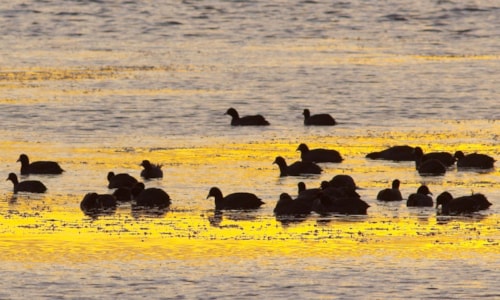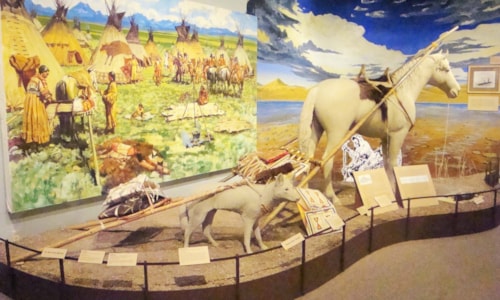Agriculture
Former fur trapper Johnny Grant developed the first commercial agricultural operation in the region. He would buy skinny, travel worn cattle from pioneers on the Oregon Trail, drive them north to the Beaverhead and Deer Lodge Valleys of Montana, fatten them up, and then the next year drive them back down to the Oregon Trail, where he would trade them for the lean, sickly cattle of the pioneers. The lush valleys and mountains of Southwest Montana offered seemingly endless acres of unsettled land for Grant's huge herds.
Although the gold rushes (beginning in Bannack in 1862) flooded the region with people, this actually helped agriculture. Bannack butcher Conrad Kohrs partnered with Grant in the early 1860s to capitalize on the mining market. However, the swelling populations of hungry miners soon drew other ranchers to the area. Among the most prominent of the Grant-Korhs Ranch's rivals was the Poindexter and Orr Cattle Live Stock Company. William Orr and Philip Poindexter had made a fortune supplying beef to the gold fields of California and in the 1860s they turned their gaze north to the burgeoning camps in Idaho and Montana. The cattlemen, however, used the land but never tamed it. With the exception of scattered plots of irrigated hay ground and some very small market gardens, the land remained uncultivated. Suppliers had to ship all of the impossibly expensive produce and grain via wagon train from either Utah or the river port of Fort Benton.
Agriculture in Montana challenges many stereotypes. For example, rather than the longhorns of the cinema, the cattle of Southwestern Montana came from west coast shorthorn stock. Even after Nelson Story brought the first Texas longhorns into the Bozeman area in 1866, cattlemen in Montana preferred shorthorns. The first diversification of agriculture in Southwest Montana came when, in 1869 a flock of fifteen hundred sheep wintered in the Beaverhead Valley. Soon, over two thirds of Montana's sheep population came from the Beaverhead, breaking another stereotype. Many romantic accounts of the west pit cowboys against sheepherders in epic struggles for land and water rights. This did not happen in Montana, in large part because the same barons who ran the cattle ran the sheep. Over the next six years or so, agriculture slowly extended outward from the Beaverhead and Deer Lodge areas. In 1875 the Siebens moved their sheep operation into the Prickly Pear Valley, north of Helena. In 1876 William Orr opened up the untouched Centennial Valley in the extreme south of Montana. With a few exceptions, grain production never took off in Southwest Montana, but Beaverhead County remains the largest producer of cattle in the state.
Today the agricultural landscape of Southwest Montana presents much the same aspect that once greeted prospectors and homesteaders: lush river bottom hay fields and vast expanses of rangeland spotted with cattle and sheep.







